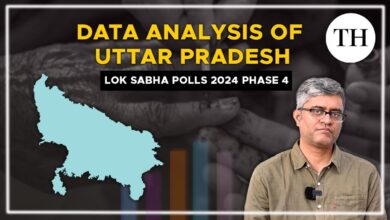How to learn data analytics for free

The U.S. Bureau of Labor Statistics projects a 36% growth rate in data science-related occupations by 2030. This estimated growth represents the seismic shift for companies all around the nation toward data-focused decision-making versus feeling-based decision-making.
The Bureau predicts there will be more than 59,000 job openings in the data space by 2023, too.
ADVERTISEMENT
UNC Kenan-Flagler’s top-ranked online MBA
STEM-designated. Tar Heel ROI. No compromises. Visit Website
Each job will require skills in data analytics—the art of collecting, understanding, and using data to make predictions for the future and prescriptions for current bottlenecks.
While data scientists, analysts, and architects are in high demand, the ripple effect extends beyond data analytics-specific companies and into all corners of the workforce in fields ranging from finance and healthcare to entertainment and education.
If you’re eyeing a career pivot or aiming to upskill your capabilities but are afraid of numbers, spreadsheets, and math, fear not. A knack for math may be part of the job, but the manipulation and storytelling of data are equally as important if you’re looking to learn data analytics.
What is data analytics?
Data analytics is the science of analyzing raw data to draw conclusions about that information. It helps businesses optimize performance, make strategic decisions, and maximize profit.
Depending on your line of work, the term data can refer to anything from financial figures, website analytics, and student graduation rates to air quality measurements, patient vitals, GPS coordinates, and social media interactions.
These facts, figures, and insights can impact your organization’s growth, help mitigate risk, and steer you or your team in the right direction. The importance of collecting and using this data shouldn’t be understated.
“The company that can make decisions faster than their competitors will have a more likely chance to win. And because of that fact, the demand for people who can understand data will continue to grow massively,” according to Mario Ciabarra, the founder and CEO of Quantum Metric.
He explains the current state of the world, what he calls the data tsunami, “For over a decade, there’s been this Gold Rush of data, where everyone’s like, ‘let’s mine as much as possible.’ And then they get their hands on it and don’t know what to do with it.” That’s where data analytics comes in.
For Mark Van de Wiel, Field CTO at Fivetran, data analytics means one simple thing: “It’s about learning from data.” In other words, as a data analyst or data scientist, you can help companies and their stakeholders make informed decisions and mitigate risk by analyzing, thinking critically, and using common sense.
Here are the six steps to learning data analytics:
- Take free courses online to learn data analytics
- Build a case study by collecting and analyzing free data
- Attend data-related conferences as part of a proactive approach to learning data analytics
- Explore artificial intelligence as a tool to learn data analytics
- Boost your technical data analytics knowledge
- Identify your data analytics soft skills
1. Take free courses online to learn data analytics
From the algorithms that recommend your next Netflix binge to the precision behind supply chain logistics, data plays a pivotal role in places we don’t even think about. Business leaders, in particular, rely on data to make informed decisions that shape their organizations’ success.
Consider Fortune’s Global 500 list—our strategic methodologies, market insights, and financial forecasts all hinge on robust data analysis. To become a proficient data analyst, you need to create a solid foundation, and free courses can be your compass.
Online classes provide a guided path and the necessary instruction to help you learn while adding projects to your portfolio. We chose free courses that offer hours of depth.
- Fundamentals of Qualitative Research Methods: This 6-chapter, 90-minute Class Central course from Yale University teaches everything from the fundamentals of qualitative research methods and asking the right questions to collecting and analyzing data through interviews and focus groups.
- Data Analysis with Python: This 300-hour freeCodeCamp course comes with a free certification of completion. This course introduces beginners to the world of data analysis and programs like SQL, Excel, Jupyter Notebooks, Numpy, Matplotliob, Seaborn, and Pandas. By the end of this course, you’ll learn how to create a sea level predictor, medical data visualizer, and mean-variance-standard deviation calculator.
- Getting and Cleaning Data: Over 20 hours, this online audit from Johns Hopkins University teaches the basics of obtaining data from the internet, APIs, and databases. The next half of the course teaches you to tidy the data up, making your conclusions more accurate and complete. The course was initially designed to take four weeks, but you can take it at your own pace.
2. Build a case study by collecting and analyzing free data
Data analytics isn’t a spectator sport—it’s participatory, and you need to get your hands dirty to learn it. Both Ciabarra and Van de Wiel agree that before you think about getting a job or if you don’t know where to start, you should try to collect, manipulate, and analyze data in your own free time.
It’s common knowledge that to learn, you need to make mistakes. According to Ciabrra, failing will only help build your analysis mindset. “Just take that first step. You’ll either discover a thirst for more, opening new doors—or you’ll realize it’s not your cup of tea,” he says
There are two avenues for building pet projects and case studies: Tap into online databases like Google Dataset Search, Data.gov, Kaggle, and FiveThirtyEight, or follow your curiosity and observations and collect the data yourself.
Hunting for your information across the internet is a vital skill in the data age. According to a survey of 150 IT, technology, and data analytics experts from U.S. retail, technology, and nonprofit organizations, publicly available web data is crucial for companies and nonprofits to meet their goals. The survey revealed that 94% of these organizations depend on this data daily to operate efficiently and effectively.
Van de Wiel explains that using your own observations can be as simple as bird-watching and jotting down information. “When my friend comes to visit, I want to know if there will be a bird for us to look at. When the weather is X and the time of day is Y, I want to know how likely we can spot one.”
Your personal case study can be as simple or complex as you want it to be. After you finish it, you can post your findings online in forums like r/DataIsBeautiful or Github’s Data Analytics repository.
3. Attend data-related conferences and be proactive
Conferences can be valuable experiences for people interested in learning data analytics. While no single conference is created equal, the big ones typically include opportunities to listen to keynote speakers, attend workshops and breakout sessions, understand cutting-edge data, and meet other like-minded people in the analytics field.
“Even relatively generic conferences are a good starting point. The main ones that come to mind are AWS Reinvent, Google Next, Microsoft Ignite, and the Databricks AI Summit,” Van de Wiel says. While these conferences are about emerging technologies, data analysis plays a huge role in how most companies and tech events operate. He says to be on the lookout for conferences offering student discounts and scholarships too.
Other notable conferences include DataCamp’s Radar: The Analytics Edition, the Gartner Data and Analytics Summit, and Coalesce. Each event covers topics like data anomaly detection, data engineering, machine learning, and AI.
4. Explore artificial intelligence as a tool to learn data analytics
For beginners, AI tools such as Gemini, ChatGPT, and Microsoft CoPilot can serve as invaluable aids to learning. “With an AI assistant, you can punch ten steps beyond your current capacity. There’s no need for a formal data analytics degree when you have a companion like Gemini to orient you,” says Ciabarra.
Most available AI language models have plugins that can help automate or speed up a task. Microsoft 365 CoPilot, in particular, can link up with 365 programs like Excel to create charts, filter data, and do complex computations, saving countless hours of manual labor. Ciabarra, who recently used Gemini to help his non-data-proficient sister nail a data-related job interview, says, “It was eye-opening for me.”
Despite smoothing the learning curve, it’s worth noting that AI is not a silver bullet. You should double-check your work, credit the AI in your findings, and understand the reasoning for the conclusions. “The capabilities of AI are not quite perfect yet,” says Van de Wiel.
5. Boost your technical data analytics knowledge
The next step is to work on taking your foundational skills to the next level. It takes a couple of scrolls through LinkedIn, Indeed, and Glassdoor job boards to see that the primary skills listed on job postings involve data visualization, machine learning, and programming.
Skills like these show up on job boards frequently: proficiency in SQL, experience working with large datasets, Python, data visualization tools like Tableau or Power BI, and drawing insights from complex data.
While these tools can be important in getting a job, Van de Wiel says, “Ultimately, there is no specific tool that fits the bill better than the other. Ask yourself, how do you want to get started with data analytics.” He explains that you can employ different techniques and programs depending on the job or task.
Ciabarra adds, “You don’t need to use the most complex software—you just need to start.” He explains that as far as learning a program goes, you have to find something you’re passionate about learning; otherwise, you’ll likely give up. Before learning tools like SQL and Python, he explains, you should “grab free data online, open up a Google sheet, and ask ‘Hey, what can I do with it?’”
Regarding the job hunt, Ciabarra says, “Recruiters are looking for people who know specialized data analytics platforms.” These tools range from Apache Spark and his own Quantum Metric to SAS, Google Cloud AutoML, and SAP Analytics Cloud.
Lastly, Van de Wiel and Ciabarra agree that as a core analyst, the technical skill of visualization is critical. Visualization refers to choosing the correct graph or plot diagram to showcase your work, which comes down to how many variables you want to show, what story you like to tell, and which diagram is easiest to read.
Showing your work can help communicate ideas to people who are not so data savvy or versed in a topic. “I love it when you look at a graph, and it just tells the story without much thought,” Ciabarra says.
6. Identify your data analytics soft skills
Beyond programming languages like SQL, R, and Python and software like Microsoft Excel, Google Sheets, Power BI, and Tableau—you should have a mindset to work efficiently.
Both experts explain that it’s okay if you weren’t born with the knack for math and that if you enjoy the work, you’ll learn that as you go. But certain telltale signs can predispose you to success in the data analytics world.
“I had a strong affinity for pattern matching and that I could see patterns early on in my life,” Ciabarra explains a math problem, “A plus B equals C, but what does C equal? If that answer comes naturally to you, the math aspect of data analysis might come easy to you, too.”
Van de Wiel brings up business communication, which involves being business savvy and being able to communicate your findings. “To be a good data analyst, you need to have a feel for business experience and know what outcomes to expect when you’re collecting data,” he explains.
You should be able to feel and picture possible solutions to a problem before you complete a project, he says. The knowledge to do this can come from an inherent awareness of how the business world works.
Fortune compiled a list of other skills, both technical and soft, to add to your toolbox.
The takeaway
The emergence of big data has revolutionized the way businesses function. With an increasing number of companies seeing the immense advantages that come with hiring data analytics professionals, the prospects for people in this field are looking more promising than ever. If you take these six steps, you’ll better understand where you wade in the data tsunami.
“What can be measured can be managed,” Ciabarra says. “All you have to do is ask yourself what purpose data serves and what outcome you [or your organization] are looking for.”
By asking these questions, you’ll learn about your dataset from a different perspective and earn your ticket to becoming an analytics wizard.
To learn more about data analytics through higher education, Fortune listed the top data science master’s degrees.



